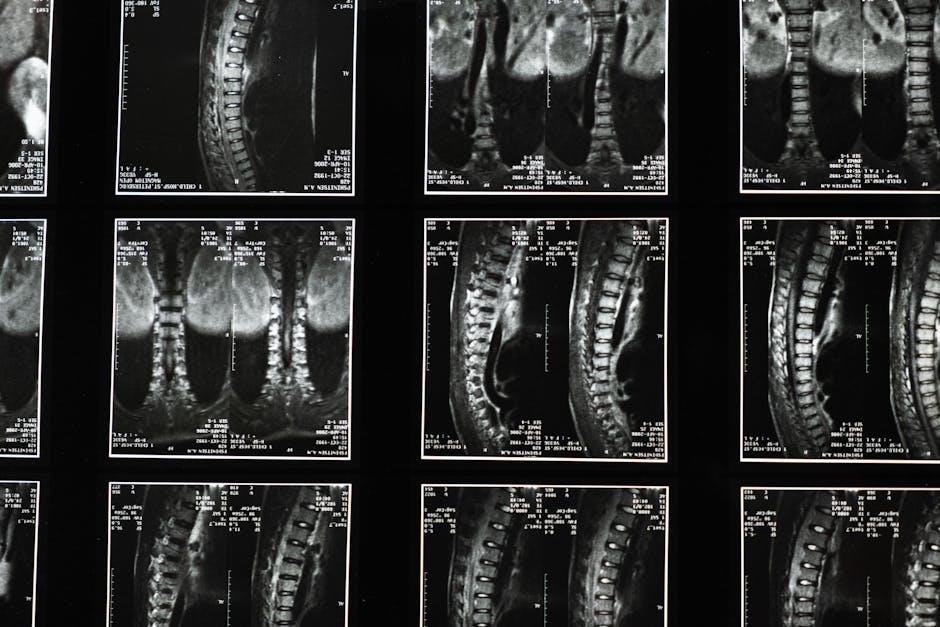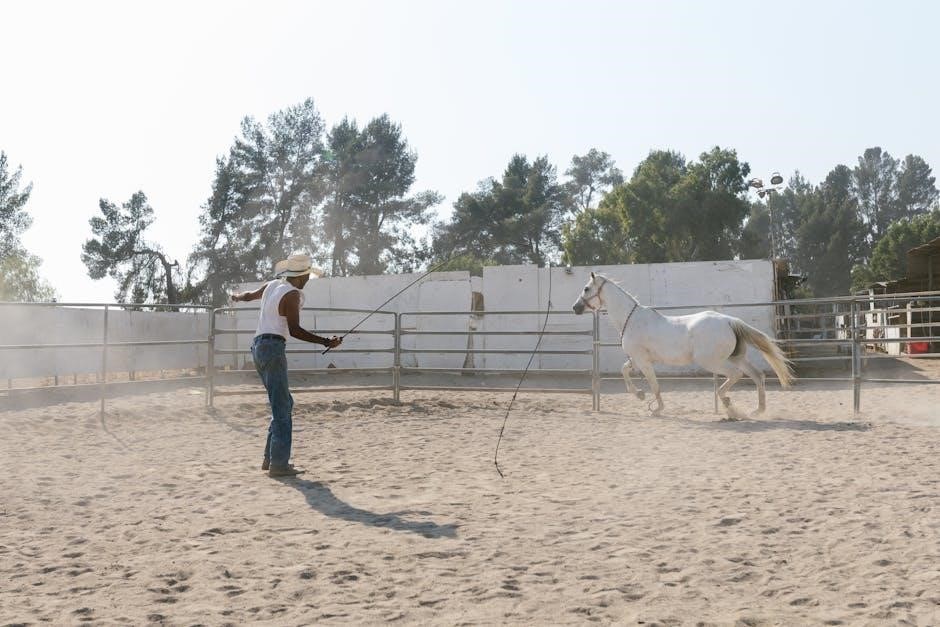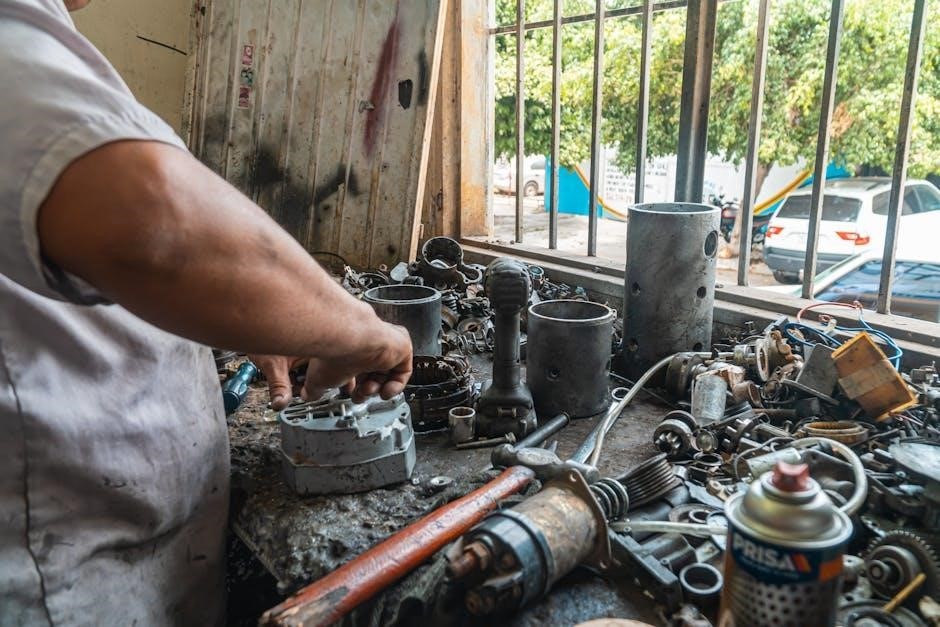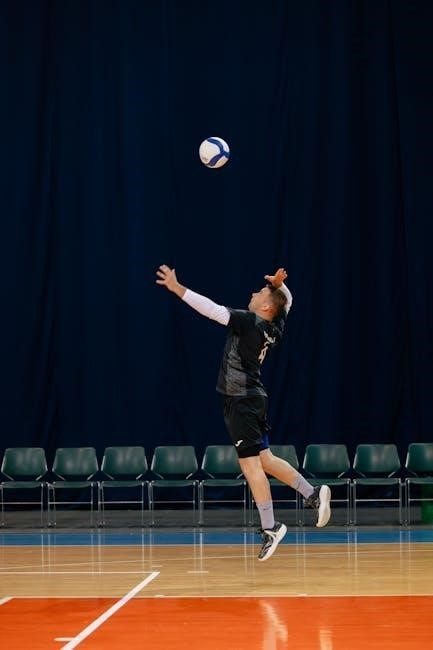Lower back pain and sciatica are common issues affecting millions, often manageable with targeted exercises. These exercises improve flexibility, strengthen muscles, and enhance posture, helping alleviate discomfort and promote recovery. Consulting a healthcare professional for personalized advice is crucial for effective management.
Understanding the Basics of Lower Back Pain
Lower back pain often results from muscle strain, poor posture, or underlying conditions like herniated discs. Gentle exercises, such as single knee to chest stretches and pelvic tilts, can help alleviate tension and improve posture. Strengthening core muscles and enhancing flexibility are crucial for managing symptoms. It’s important to listen to your body and avoid overexertion, as this can worsen the condition. Consulting a healthcare professional provides personalized guidance for effective management.
Importance of Exercise in Managing Symptoms
Exercise plays a vital role in managing lower back pain and sciatica by reducing inflammation, strengthening muscles, and improving posture. Gentle stretches, like the single knee to chest stretch, and strengthening exercises, such as pelvic tilts, help relieve tension and enhance core stability. Regular activity promotes blood flow, aiding nerve recovery and preventing further discomfort. Consistency is key, as it helps maintain muscle strength and flexibility, reducing the risk of recurrence.
Understanding Sciatica and Its Causes
Sciatica refers to pain radiating along the sciatic nerve, often caused by nerve compression or irritation. Exercises targeting the lower back and hips can alleviate symptoms effectively.
What is Sciatica?
Sciatica is a condition characterized by pain radiating along the sciatic nerve, which runs from the lower back down to the legs. It occurs when the sciatic nerve is compressed or irritated, often due to a herniated disc, spinal stenosis, or piriformis syndrome. Symptoms include lower back pain, numbness, tingling, and weakness in the affected leg. Exercises and stretching can help alleviate these symptoms by reducing nerve compression and improving mobility.
Causes and Risk Factors of Sciatica
Sciatica primarily results from compression or irritation of the sciatic nerve, often caused by a herniated disc, spinal stenosis, spondylolisthesis, or piriformis syndrome. Risk factors include aging, obesity, sedentary lifestyles, and improper lifting techniques. These conditions can weaken spinal structures, leading to nerve compression and pain. Understanding these causes helps in developing targeted exercises to address the root of the problem and alleviate symptoms effectively.

Benefits of Exercises for Lower Back Pain and Sciatica
Exercises reduce inflammation, strengthen muscles, and improve mobility, providing relief from pain. Regular activity helps prevent future discomfort and supports long-term spinal health effectively.
How Exercise Reduces Inflammation and Pain
Exercise enhances blood flow, reducing inflammation and promoting healing in the lower back. Activities like stretching and strengthening movements relieve pressure on the sciatic nerve, decreasing pain. Regular movement improves circulation, which helps reduce swelling and accelerates recovery. Gentle exercises, such as pelvic tilts and knee-to-chest stretches, are particularly effective in alleviating discomfort while strengthening supportive muscles. Consistency in exercise routines is key to long-term pain management and improved mobility.
Improving Posture and Core Strength
Strengthening the core and improving posture are essential for reducing lower back pain and sciatica. Exercises like pelvic tilts and press-ups help stabilize the spine, reducing strain on the sciatic nerve. Strong abdominal and back muscles enhance posture, preventing excessive curvature and alleviating discomfort. Regular core-strengthening routines promote better alignment, reducing the risk of further injury and improving overall spinal stability for long-term relief.
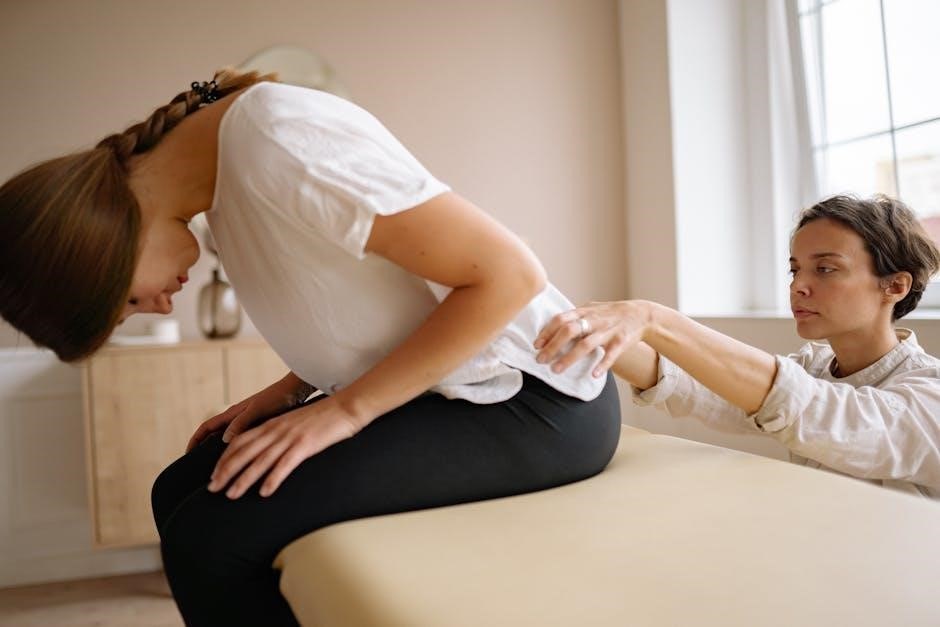
Specific Exercises for Lower Back Pain
Exercises like knee-to-chest stretches, pelvic tilts, and press-ups target the lower back, improving flexibility and reducing strain. These movements help alleviate discomfort and promote spinal stability.
Knee to Chest Stretch
Lie on your back, knees bent, and feet flat on the floor. Gently pull one knee toward your chest, holding for 20-30 seconds. This stretch alleviates lower back tension by targeting the lumbar muscles and improving flexibility. It is essential to perform the movement slowly and avoid bouncing to prevent strain. Repeat on the other side to ensure balanced relief and enhanced spinal mobility.
Pelvic Tilts and Press-Ups
Pelvic tilts and press-ups are effective exercises for relieving lower back pain. Lie on your back with knees bent and feet flat. Tilt your pelvis upwards, flattening your lower back against the floor, and hold for 5 seconds. For press-ups, arch your back and lift your chest, holding briefly. These movements strengthen core muscles and improve spinal alignment, providing relief from tension and discomfort. Perform 5-10 repetitions for optimal benefits.
Stretching Exercises for Sciatica Relief
Stretching exercises target tight muscles, improving flexibility and reducing nerve compression. Techniques like piriformis stretches and seated stretches help alleviate sciatic pain, enhancing mobility and comfort.
Piriformis Stretches
Piriformis stretches target the piriformis muscle, which runs from the base of the spine to the thighbone. Tightness in this muscle can compress the sciatic nerve, causing pain. To perform, lie on your back, cross the affected ankle over the opposite knee, and gently pull the unaffected leg toward your chest until a stretch is felt. Hold for 20-30 seconds and repeat 2-3 times. This stretch helps relieve tension and reduce sciatica symptoms. Adjust the stretch based on comfort and avoid movements that worsen pain.
Seated and Standing Stretching Techniques
Seated stretches, such as crossing one ankle over the opposite knee and gently leaning forward, can help relieve sciatica by targeting tight hip muscles. Standing stretches, like bending forward at the hips to touch the toes or stretching hamstrings against a wall, improve flexibility and reduce tension. These exercises promote blood flow and relax tightened muscles, aiding in pain relief. Perform each stretch for 20-30 seconds, 2-3 times daily, and avoid bouncing or forcing beyond comfort.

Strengthening Exercises for Long-Term Relief

Strengthening core, abdominal, and glute muscles enhances spinal stability, reducing pain and preventing future strain. Targeted exercises improve posture and provide long-term relief from lower back discomfort.
Abdominal and Hip Flexor Strengthening
Strengthening abdominal and hip flexor muscles is crucial for spinal stability and posture improvement. Exercises like abdominal curl-ups and hip flexor stretches target these areas, reducing strain on the lower back. These muscles play a key role in supporting the spine, making them essential for long-term pain relief and preventing future discomfort. Regular practice enhances core strength and promotes overall back health.
Glute and Back Muscle Strengthening Exercises
Strengthening glute and back muscles is vital for alleviating lower back pain and sciatica. Exercises like bridging, superman stretches, and bird-dog poses target these areas, improving posture and reducing nerve compression. Stronger glutes and back muscles provide better spinal support, enhancing stability and reducing discomfort. Regular practice helps prevent muscle imbalances and promotes long-term relief from sciatica symptoms, fostering overall lower back health and functionality.

Safe Exercise Practices
Always listen to your body and avoid overexertion. Stop exercises if pain worsens. Move slowly, avoid rapid movements, and never force positions. Modify exercises based on pain levels to ensure safety and effectiveness.
Listening to Your Body and Avoiding Overexertion
Stop exercises if pain increases. Avoid rapid or forced movements, as they can worsen symptoms. Gauge intensity by pain levels, aiming for 4-5/10. Focus on slow, controlled movements. If discomfort arises, modify or rest. Prioritize comfort and safety to prevent aggravation and ensure effective, sustainable progress in managing lower back pain and sciatica.
Modifications for Different Fitness Levels
- Beginners can start with gentle, supported versions of exercises, such as seated stretches, to avoid strain.
- Advanced individuals can gradually increase intensity or add resistance for more challenging workouts.
- Using props like chairs or rails for support during exercises helps maintain proper form and reduce injury risk.
- Progressions allow individuals to slowly move to more complex exercises as strength and flexibility improve.
- Consulting a healthcare professional ensures exercises are tailored to individual fitness levels, promoting safe and effective routines.

When to Consult a Healthcare Professional
Consult a healthcare professional if pain persists or worsens, especially with red flags like severe pain, numbness, or difficulty moving. Seek personalized advice for safe, effective exercise routines.
Red Flags for Severe Pain
Severe pain accompanied by numbness, tingling, or weakness in the legs may indicate serious conditions like disc herniation or nerve compression. Sudden loss of bladder or bowel control, fever, or unrelenting pain warrants immediate medical attention. These red flags suggest underlying issues requiring prompt evaluation and treatment, ensuring proper management and preventing further complications.
Creating a Personalized Exercise Plan
A personalized exercise plan for lower back pain and sciatica should be tailored to individual needs, focusing on gentle stretches and strengthening exercises. Start with assessments to identify specific areas of discomfort and set realistic goals. Incorporate exercises like single knee-to-chest stretches or pelvic tilts, gradually increasing intensity. Regular reassessment ensures progress and safety, fostering long-term relief and improved mobility. Professional guidance is key to developing an effective plan.

Advanced Exercises for Sciatica and Lower Back Pain
Advanced exercises include dynamic stretching, foam rolling, and progressive resistance to improve mobility and strength. These techniques target the sciatic nerve and lower back, enhancing flexibility and reducing strain without causing further injury. Proper form is essential to maximize benefits and prevent discomfort.
Dynamic Stretching and Foam Rolling
Dynamic stretching involves gentle, controlled movements to improve flexibility and blood flow, while foam rolling targets muscle tension. For sciatica, rolling the piriformis and hamstrings can relieve pressure on the sciatic nerve. Dynamic stretches like cat-cow and side bends enhance spinal mobility. Start slowly, focusing on smooth movements, and avoid bouncing to prevent discomfort. These techniques are effective for improving circulation and reducing muscle tightness, promoting long-term relief from lower back pain and sciatica symptoms.
Progressive Resistance Exercises
Progressive resistance exercises involve gradually increasing the intensity of workouts to build strength. For lower back pain and sciatica, these exercises focus on strengthening abdominal, hip, and glute muscles. Examples include straight leg raises and back flexion. Start with light resistance and gradually increase as strength improves. These exercises enhance spinal stability and posture, reducing pain and improving overall function. Regular practice promotes long-term relief and prevents recurrence of symptoms.
Exercises for lower back pain and sciatica offer effective relief and long-term management. Consistency and patience are key to achieving lasting benefits. Always consult a healthcare professional for personalized guidance and to ensure exercises are performed safely and appropriately for your condition.
Summarizing the Key Points
Exercises for lower back pain and sciatica focus on improving flexibility, strength, and posture. Stretching, strengthening, and aerobic exercises are essential for alleviating symptoms. Consistency is crucial for long-term relief, and listening to your body prevents overexertion. A well-rounded routine, including core exercises and gentle stretches, helps reduce pain and improve mobility. Always consult a healthcare professional to tailor exercises to your specific needs for safe and effective results.
Regular exercise not only reduces stiffness but also enhances overall well-being. Patience and gradual progress are key to achieving lasting benefits and avoiding discouragement. By combining these approaches, individuals can effectively manage lower back pain and sciatica, leading to a healthier, more active lifestyle.
Encouraging Consistency and Patience

Consistency is key when managing lower back pain and sciatica through exercise. Gentle, regular movements help reduce stiffness and strengthen muscles over time. Patience is essential, as progress may be gradual. Avoid overexertion, as this can worsen symptoms. Celebrate small achievements to stay motivated, and remember that steady effort leads to lasting relief. Balancing persistence with patience ensures a safe and effective journey toward healing and improved mobility.
